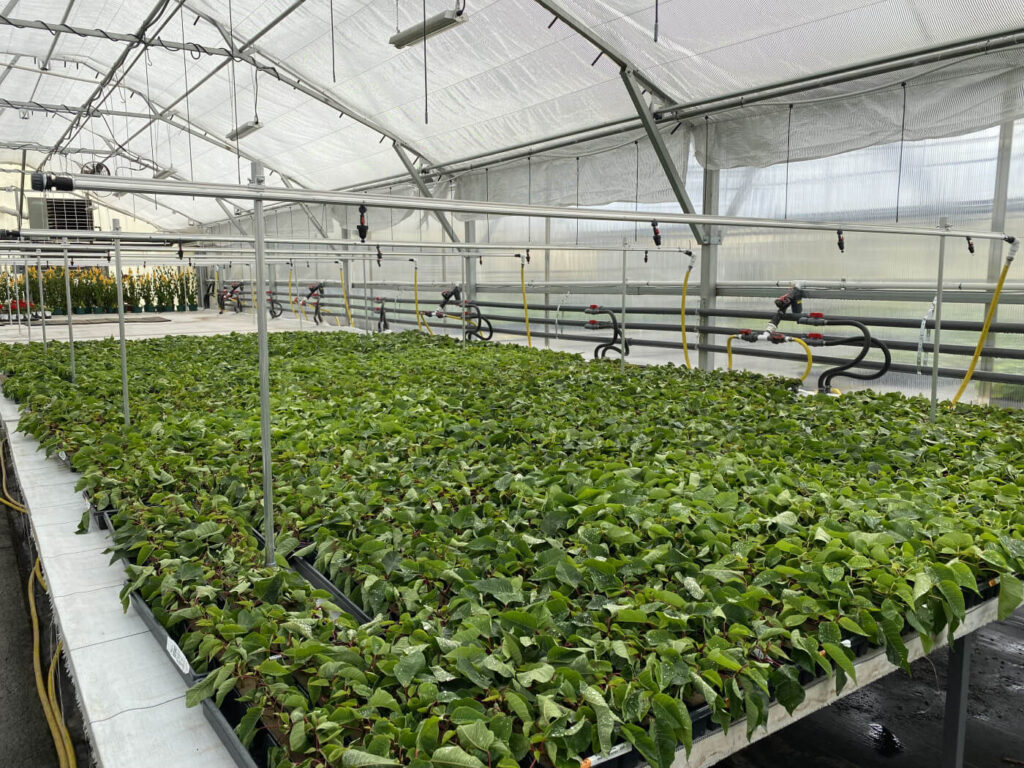With unemployment below 4%, labor remains tight. Finding employees is a difficult task, not to mention finding people qualified to water correctly. Upgrading your irrigation systems can reduce labor greatly while improving plant quality.
Irrigation is one of the most important tasks in horticulture. Providing even watering to all plants while understanding the volumes required, understanding the variables of climate and light on need and utilizing correct pattern, droplet sizes and tools makes this a job for experienced employees. Upgrading to overhead, drip and capillary irrigation systems can provide the evenness, correct flows and right delivery while freeing up labor. (Dramm has a number of tools to help train on hand watering: Blog Post, Watering 101 Video, Watering Tool Selection Video) Automating this task, by installing watering systems designed to efficiently apply water to the plant, evenly and specifically, can reduce labor greatly while keeping plant growth healthy and even.
The decision to automate irrigation involves two points: developing an irrigation system capable of providing even watering throughout the crop and considering if you want a computer or timed schedule to dictate when plants are watered. These are mutually exclusive. You can manually start an irrigation system on your own. You can also automate this system to water on a set schedule or when environmental parameters dictate. Often, growers equate irrigation automation with giving up control. This does not need to be the case, An irrigation system can be designed to apply water evenly from plant to plant without automatically activating a watering cycle. Manual operation or even semi-automated systems are common. (read our blog post on this topic)
There are many systems that can water plants effectively. From overhead irrigation and misting to drip irrigation to subirrigation, each system has benefits and weaknesses. Dramm can help you choose a system that is the best fit for your needs.
The important thing is that the water delivery is reduced to activating a valve.
A drip irrigation system, once activated, delivers even water flows at a low flow rate directly to the media. This is done with minimal labor and results in extremely even watering from plant to plant. Water and nutrient uptake are almost identical from plant to plant, ensuring even growth.
An overhead irrigation or mist system can be designed to provide very even watering over a specific area. This method works well for smaller containers and younger plants where the foliage hasn’t covered the pot. Once again, an entire zone can be watered with the activation of a valve, reducing labor.
Subirrigation with capillary mats works similarly. Water flows through pressure compensated emitters to saturate a mat with precise amounts of water. This mat, in contact with the media in the container, allows moisture to be wicked as needed into the media and to the roots, watering the plant. An advantage with capillary mats is that any plant on the mat gets watered. This works great in retail or on half-full benches.
Dramm offers a variety of systems to fit each need. Dramm will design your system to include fittings, filters, and all the components needed to make it work properly and will ship the system complete. Contact our team at the numbers to the left or submit a design request on our website to get ready for spring.

